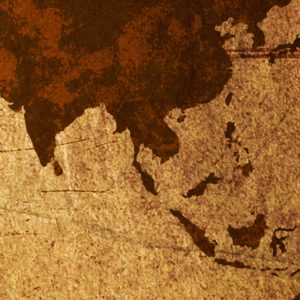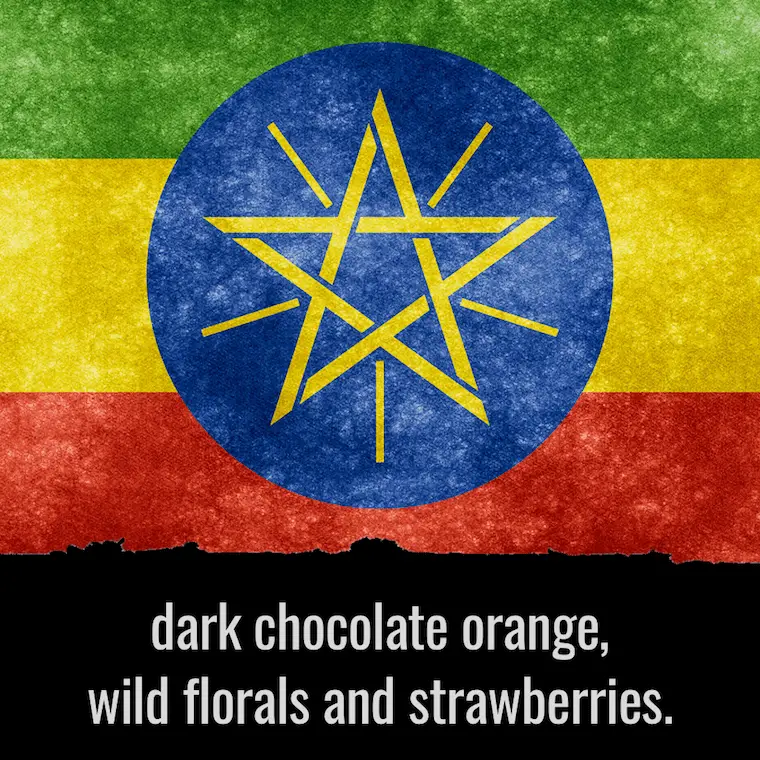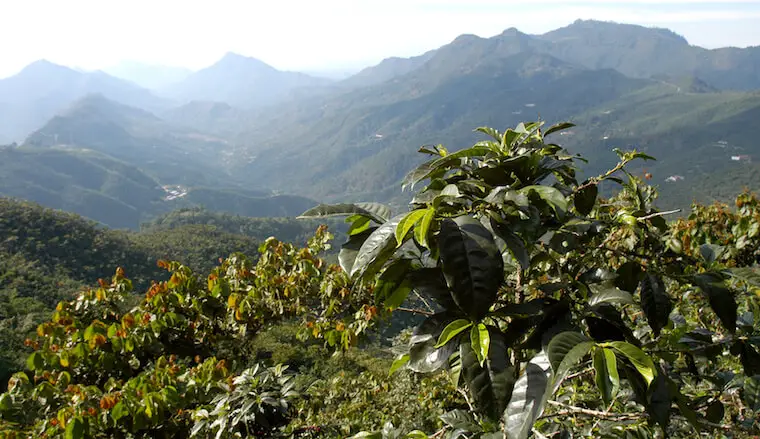The quickest way to work out if someone knows a thing or two about coffee is to see if they know how the taste changes by region.
Let’s say I plopped a bag in front of you. It’s from Africa, maybe an Ethiopian Sidamo. The packaging is bare and it’s tightly wrapped, so you can’t smell a thing. What does it taste like?
If you have no idea, you’re going to want to pay very close attention to this article.
In a few short seconds, you’ll find out what the 3 main coffee-growing regions are… along with exactly how the taste profiles of coffee change with each region. I’ll even tell you where I think every coffee lover should be trying coffee from right now (hint: it’s got just a little to do with delicious notes of blueberry!)
What are the three main coffee regions?
The three main coffee growing regions in the world are Asia, Africa and Latin America. Coffee beans from these areas can broadly be assumed to share similar tastes.
But (and this is a BIG one), each region can be split into sub-regions, countries, farming co-operatives and even tiny microlots. Even within a single country, you might find wildly different tastes.
Africa
Africa is famous for its bright, punchy flavors, usually with a fruity or floral twist. A popular example is the Ethiopian Yirgacheffe, which brews a coffee with extremely distinctive notes of lemon (try it, it’s great!)

African coffees tend to suit light or medium roasts which bring out these flavors more. You’ll find more single origin coffees from this region than any other, too. Try brewing some African coffee with a high clarity brew method to bring out the brighter flavors. A Chemex or an Aeropress would work well.
Popular African coffees include:
Kenya – Juicy, Grapefruit, Blackcurrant, Spice
Ethiopia – Berry, Lemon, Cocoa
Burundi – Vanilla, Chocolate
Latin America
Latin America is known for its sweet and lightly acidic coffees. The region has (probably) the most balanced flavors of the three, and this is why it’s used a lot in coffee blends.

The term “Latin America” is used because coffee can be grown in Central America or the northern parts of South America, and the two areas have similar tasting coffee.
Latin American coffee beans often suit a medium roast, and can be brewed with any brew method with great results.
Popular Latin American coffees include:
Colombia – Balanced, Medium Bodied, Sweet
Guatemala – Smoky, Spicy, Floral
Costa Rica – Citrus, Nutty
Asia
Coffee beans from Asia tend to taste bitter, spicy and earthy. The sweeter and fruity notes you can get in other parts of the world are generally absent. It’s probably for this reason that Asia coffee is seen as poorer quality, and it’s usually cheaper, too.

Coffee beans from Asia often suit a darker roast, which matches the darker and woodier flavors of the bean. It goes well with full bodied brews, so try using a French Press for your Asian coffees.
Popular Asian coffees include:
Java – Heavy Bodied, Woody
Sumatra – Earthy, Smoky
India – Low Acid, Spicy, Heavy Bodied
Are there other regions that grow coffee?
Other coffee growing regions do not exist outside of the three main regions of Africa, Asia and Latin America. To understand why, we can use this great graphic from Eleven Coffees that shows something called the “Coffee Belt”.

The yellow rectangle shows where the climate is suitable for growing coffee, and the shaded countries are the main coffee growing ones. (Perhaps a head slapping moment when you realise why you never come across an Icelandic Dark Roast!)
Another thing about that graphic though, not every country in the yellow bar grows coffee. Why is that? Well, weather alone isn’t enough to grow coffee. Another important requirement is elevation. You’ll find lots (all, maybe?) coffee plantations in hills or mountains.
How can coffee taste of blueberries?
Coffee is intensely flavorful — it actually contains more flavenoids than wine. Those are the little chemical structures that give a fruit, a drink or a perfume its smell or flavor. So when someone tells you a coffee tastes of blueberries, they’re not having you on. It really does!

And we’re not talking about an infusion here. Or adding fruit to the drink. Or anything weird like that. Seriously, coffee all on its own can taste like that.
Take a look at the picture on the right. That’s the tasting notes for a coffee. Quick test btw, where do you think it comes from?
.
.
.
If you said Africa, well done! Those fruity and floral flavors are obvious signs it’s an African coffee. The Ethiopian flag might have been a bit of a clue as well!
Now, you might be thinking that coffee tasting like dark chocolate orange or strawberries is a bit of a stretch? Well, it is if you drink instant. Or Starbucks. Or whatever garbage gets delivered to your office canteen.
Pick the right coffee roasters and it’s like a different world. They’ll roast your coffee and sell it to you fresh. Like two or three days after the roast. And the beans will be selected and roasted to enhance those flavors, not to create generic-tasting coffee (that only tastes nice when served with gallons of sugar and cream!)
Where is Arabica and Robusta grown?
Arabica coffee is grown everywhere in the world. It’s the better quality stuff, and makes up about 80% of the world’s consumption. And when it comes to good coffee? You know, the expensive stuff with a pretty label telling you where it comes from? That’s almost certainly Arabica.
Robusta is usually grown in Asia. These coffee beans are more bitter and caffeinated, and tend to find their uses in instant coffee or espresso blends. You can find Robusta coffee beans in some Asia countries like Vietnam or the Phillipines. It’s cheaper to grow and transport when it’s local. And actually, I’ve never heard of anyone selling a Robusta that wasn’t grown in Asia.
What if there is no region on my coffee?
There are two reasons why a bag of coffee beans won’t tell you the region the beans come from. Either it’s a blend from a few different places, or it’s cheap, rubbish coffee.
A blend is when you sell a bag that has a mix of coffee beans from different regions. Together, the different ratios of coffee can create consistent flavors, and usually blends are considered more smooth and balanced. Maybe you’ve heard of Mocha Java? That’s a famous blend.
Blends aren’t better or worse, just different. And in fact, some blends change the ratios of coffees year on year to keep the taste the same. This is because any individual coffee beans could taste a little different, one yera to the next
The alternative to blends is what are known as single origin coffees. This is where all the coffee beans in your bag are from the same place. Often the same country, sometimes even the same farm!
Single origins are great for enhancing the inherent flavors in the bean, and they’ll wear the name of the region the beans are from like a badge of honour.
You might simply be buying cheap coffee though, which sometimes won’t even go to the effort of writing on the bag where the coffee comes from. The solution? BUY BETTER COFFEE.

What’s the best region for coffee?
There is no best region for coffee, as each one has its advantages and disadvantages. On the other hand, if you’re looking for somewhere to get started, here’s what I’d do: Get into African coffees.
Coffee beans from Africa, in particular single origins, are the darling of the coffee world right now. Ask any clued-up roaster or barista what they’re drinking, and they’re likely to wax lyrical on their latest Kenyan or Ethiopian.
Here’s a few examples of what to expect.
African coffee beans
Couple of things though. Firstly, make sure you’re buying your African coffee from a good roasters. They’re everywhere these days, so no excuses. Second point is, lay off the cream. With coffee this good? You don’t need too much (or any…!)

Conclusion
So by now you should know what the three main coffee growing regions are, and what to expect from each. Quick question: did you pass the test above? If so, you’re onto a great start.
Your next step is to apply this knowledge with some real coffees. Get yourself down to your local coffee roasters, or find somewhere decent online. Then… buy some coffee!
A few single origins that are hot right now include the Guatemalan Huehuetenango, the Ethiopian Yirgacheffe or the Costa Rican Tarrazu. But really, see what your roaster offers and try anything you can.
And if all that sounds good to you? You might just be interested in how to read the tasting notes on your coffee beans (so you get the very best out of them!)



2 Comments
“When you see ‘100% Arabica’ on the side of a bag of coffee is a bit pointless and is mostly marketing speak. If you’re spending over $10 on a lb of coffee it’s a practical certainty that it’s 100% Arabica.”
You may have missed italian espresso blends which is famous for mixing robusta with Arabica. So maybe 100% Arabica does have it’s validity after all :). Like it or not it is valued and brand like Lavazza does that.
You’re completely right, there’s several excellent brands of coffee that use Robusta or even other types of bean. I guess I wrote it as a shot at those cheapo bags of brown rubbish that proudly say ‘100% Arabica’ in an attempt to fool you when you’re picking up some coffee.